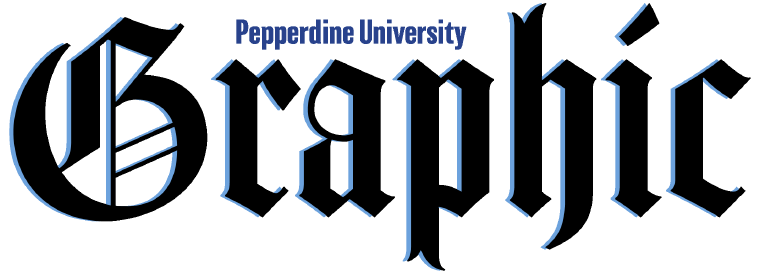Kathy Millar
Living Assistant
Malibu is often perceived as having the most beautiful beaches in California. Celebrities flock to Malibu to buy expensive beachfront homes and Pepperdine students brag about their proximity to the ocean.
However, the non-profit environmental research organization Heal the Bay reports that Malibu’s beach water is contaminated in many locations.
The 2005-2006 Heal the Bay Annual Report Card on HealtheBay.org ranks Malibu’s Surfrider Beach as the fourth most polluted beach in California, and Topanga State Beach as the ninth.
Mike Grimmer, Environmental Data Analyst from Heal the Bay, said in an e-mail interview that there are many causes to Malibu’s beach water pollution.
“Runoff from creeks, rivers and storm drains is the largest source of pollution to California beaches,” Grimmer said. “Malibu beaches are susceptible to poor water quality for this reason and a variety of other reasons ranging from inadequate septic systems, unauthorized discharges to creeks, inadequate treatment facilities (Paradise Cove), and an all-of-the above scenario at Surfrider Beach.”
In addition, pollutants can stew in the Malibu Lagoon if it does not get proper circulation, and eventually seep through the sand.
Dr. Karen Martin, professor of Biology in the Natural Science Division, said coastal water pollution is a “constant environmental issue in Malibu.”
According to HealtheBay.org, pollution in the water can come from human and animal sewage, rainstorm runoff of motor oil and trash.
Heal the Bay also releases weekly report cards of California’s popular beaches on its Web site, and Malibu’s beaches have most recently received mixed reviews, including grades of Ds and Fs.
The grades that beaches receive are based on daily and weekly data of bacteria densities in the beach water collected by county and city public programs. Heal the Bay grades beaches according to water quality standards, with A meaning “excellent” and F meaning “very poor.”
Martin said that Heal the Bay is an “extremely reputable” research organization that works very closely with scientists and government agencies.
During a four-week period ending August 29, Marie Canyon Storm Drain at Puerco Beach got an “F,” Surfrider Beach at Malibu Colony Fence got an “F,” Surfrider Beach at the breach location got a “D,” Solstice Canyon at Dan Blocker Beach got a “D,” and Carbon Beach at Sweetwater Canyon got a “D.”
Meanwhile, other beaches farther north in Malibu received far better grades. Leo Carillo Beach got an A, Zuma Beach at Zuma Creek Mouth got an A, and Paradise Cove Pier at Ramirez Canyon Creek mouth got an A.
Grimmer said the grades that the beaches receive are often affected by location.
“Most of the poorly graded beaches in Malibu are at the mouth of stormdrains or creeks, where pollutants from upstream, or inadequate septic systems near the ocean are the culprits,” Grimmer said.
The grades of the local beaches also vary due to tidal circulation, according to Dr. Stephen Davis, Distinguished Professor of Biology at Pepperdine.
Davis said urban development has stabilized sand and prevented tides and waves from bringing in new sand and water.
Meredith Johnson, a freshman, said she thinks the statistics on Malibu’s beach water are surprising.
“This is such a high-class area, and there is a lot of wealth in the area,” Johnson said. “With Hollywood and actors taking a stance on conservation and pollution, it is surprising to me that Malibu would be rated so badly.”
Eric Burdullis is a surfer who is also a freshman at Pepperdine. He said he has seen trash on the beach at Zuma.
“It makes me sad, when you go to Zuma,” Burdullis said. “There is just so much trash, you know that it affects the water.”
According to a 1996 study published by University of Southern California and The Santa Monica Bay Restoration Project, when humans swim in polluted beach water, there is an increased risk for contracting the stomach flu, ear infections, upper respiratory infections or major skin rashes.
Davis offers advice to beachgoers about avoiding illness due to harmful bacteria in the beachwater.
“Number one, don’t come in contact, and number two, don’t have breaks in your skin. But if it does get in your skin, make sure your immunity is good.”
Heal the Bay also suggests that beachgoers protect themselves from contaminated water by following basic safety guidelines.
People should wait at least 72 hours after a rainstorm before swimming in beach water.
It is also advisable to stay away from flowing storm drains or storm drain puddles. Additionally, people should avoid swimming in enclosed beaches with limited tidal circulation.
The official City of Malibu Website acknowledges that Malibu’s beaches need improvement.
Malibu has taken steps to minimize pollutants in the coastal water by sweeping city streets, cleaning out storm drains and implementing a recycling program for residents, according to the critics Web site. Additionally, Malibu has built a storm drain disinfection facility to treat dry water and flush runoff from the Civic Center area.
Yet, Heal the Bay’s research showed that these steps may not be enough.
Even though 14 new sites near storm drains or creeks in the Santa Monica Bay area were added to the Los Angeles County monitoring program, including Malibu’s Marie Canyon storm drain at Puerco Beach, Heal the Bay stated in its 2005-2006 Annual Beach Report Card Summary that the Los Angeles County Health Department failed to act on alarming data that showed health risks to swimmers.
09-07-2006

